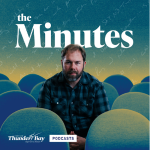Parent and tot 1
|
- Designed for the 4 to 12-month-old to learn to enjoy the water with the parent.
- This program will create a comfort level for both child and parent.
- Orientation to pool and being safe around water.
- Entries/exits, floats and movement.
- Instructor to child ratio: 1:12
- 30 Minute Lesson
|
Parent and tot 2
|
- Designed for the 12 to 24-month-old to learn to enjoy the water with the parent
- Unassisted entries/exits.
- Floats with an aid, submersion in water, activities with instructor/other parents.
- Instructor to child ratio: 1:12
- 30 Minute Lesson
|
Parent and tot 3
|
- Designed for the 2 to 3-year-old to learn to enjoy the water with the parent.
- Your child will experience safety awareness and water skills through discovery, front and back floats, submersion and movement skills.
- Active parent participation is required.
- Instructor to child ratio: 1:12
- 30 Minute Lesson
|
Preschool A
|
- We encourage the parent to participate until their child lets them know they can do it themselves (thank you very much).
- These preschoolers will have fun learning to get in and out of the water.
- We'll help them jump into chest deep water.
- They'll try floats on their front and back, and glides on their back while wearing a personal flotation device (PFD).
- They'll learn to get their face wet and blow bubbles underwater.
- Instructor to child ratio: 1:4
- 30 Minute Lesson
|
Preschool B
|
- These preschoolers learn to jump into chest deep water by themselves, and get in and get out wearing a personal flotation device.
- They'll submerge and exhale underwater.
- While wearing a personal flotation device they'll glide on their front and back.
- Instructor to child ratio: 1:4
- 30 Minute Lesson
- Prerequisite: Completed Preschool A
|
Preschool C
|
- These youngsters will try both jumping and a side roll into deep water while wearing a personal flotation device.
- They'll recover objects from the bottom in waist-deep water.
- They'll work on kicking and gliding through the water on their front and back.
- Instructor to child ratio: 1:4
- 30 Minute Lesson
- Prerequisite: Completed Preschool B
|
Preschool D
|
- Advanced preschoolers will learn to do solo jumps into deeper water and get out by themselves.
- They'll do side roll entries and open their eyes underwater.
- They'll master a short (3-5 m) swim on their front and gliding and kicking on their side.
- Instructor to child ratio: 1:4
- 30 Minute Lesson
- Prerequisite: Completed Preschool C
|
Preschool E
|
- These youngsters get more adventuresome with a forward roll entry wearing a PFD and holding their breath underwater for up to 10 sec.
- They'll work on longer front and back crawl swims, interval training and get a giggle out of whip kick.
- Instructor to child ratio: 1:4
- 30 Minute Lesson
- Prerequisite: Completed Preschool D
|
Swimmer 1
|
- These beginners will become comfortable jumping into water with and without a personal flotation device.
- They'll learn to open their eyes, exhale and hold their breath underwater.
- They'll work on floats, glides and kicking through the water on their front and back.
- Instructor to child ratio: 1:4
- 30 Minute Lesson
- Prerequisite: Beginner, non-swimmer, or Preschool A, B or C
|
Swimmer 2
|
- These advanced beginners will jump into deeper water, and learn to be comfortable falling sideways into the water wearing a personal flotation device.
- They'll be able to support themselves at the surface without an aid, learn whip kick, swim 10-15m on their front and back, and be introduced to flutter kick interval training (4 x 9-12 m).
- Instructor to child ratio: 1:4
- 30 Minute Lesson
- Prerequisite: Swimmer 1 or Preschool D or E
|
Swimmer 3
|
- These junior swimmers will dive and do in-water front somersaults.
- Their new bag of tricks includes handstands and completion of the Canadian Swim to Survive® Standard.
- They'll work on 10 15m of front crawl, back crawl and whip kick.
- Flutter kick interval training increases to 4 x 25 m.
- GROUP LESSON- Instructor to child ratio: 1:6, 45 Minute Lesson
- LOW RATIO LESSON- Instructor to child ratio: 1:3, 30 Minute Lesson
- Prerequisite: Swimmer 2
|
Swimmer 4
|
- These intermediate swimmers will swim 5 m underwater and lengths of front, back crawl, whip kick, and breaststroke arms with breathing.
- They'll cap it all off with front crawl sprints over 25 m and 4 x 25 m front or back crawl interval training.
- GROUP LESSON- Instructor to child ratio: 1:8, 45 Minute Lesson
- LOW RATIO LESSON- Instructor to child ratio: 1:4, 30 Minute Lesson
- Prerequisite: Swimmer 3
|
Swimmer 5
|
- These swimmers will master shallow dives, cannonball entries, eggbeater kicks, and in-water backward somersaults.
- Surface dives will take them down to underwater swims.
- They'll refine their front and back crawl over 50 m swims of each, and breaststroke over 15-25m.
- Then they'll pick up the pace in 25 m sprints and two interval training bouts: 4 x 50 m front or back crawl and 4 x 10-15 m breaststroke.
- GROUP LESSON- Instructor to child ratio: 1:8, 45 Minute Lesson
- LOW RATIO LESSON- Instructor to child ratio: 1:4, 30 Minute Lesson
- Prerequisite: Swimmer 4
|
Swimmer 6
|
- These advanced swimmers will rise to the challenge of sophisticated aquatic skills including stride entries, compact jumps and lifesaving kicks like eggbeater and scissor kick.
- They'll develop strength and power in head-up breaststroke sprints over 25 m.
- They'll easily swim lengths of front crawl, back crawl, and breaststroke, and they'll complain about the 300 m workout.
- GROUP LESSON- Instructor to child ratio: 1:8, 45 Minute Lesson
- LOW RATIO LESSON- Instructor to child ratio: 1:4, 30 Minute Lesson
- Prerequisite: Swimmer 5
|
Swimmer 7 (Rookie)
|
- Swimmers continue stroke development with 50m swims of front crawl, back crawl and breaststroke.
- Lifesaving sport skills include a 25 m obstacle swim and 15m object carry.
- First aid focuses on assessment of conscious victims, contacting EMS, and treatment for bleeding.
- Fitness improves in 350 m workouts and 100 m timed swims.
- Instructor to child ratio: 1:8
- 45 Minute Lesson
- Prerequisite: Swimmer 6
|
Swimmer 8 (Ranger)
|
- Swimmers develop better strokes over 75 m swims of each stroke.
- They tackle lifesaving sport skills in a lifesaving medley, timed object support and rescue with a buoyant aid.
- First aid focuses on assessment off unconscious victims, treatment of victims in shock and obstructed airway procedures.
- Skill drills develop a strong lifesaving foundation.
- Instructor to child ratio: 1:8
- 45 Minute Lesson
- Prerequisite: Swimmer 7 (Rookie)
|
Swimmer 9 (Star)
|
- Swimmers are challenged with 600m workouts; 300m timed swims and a 25 m object carry.
- Strokes are refined over 100 m swims.
- First aid focuses on treatment of bone or joint injuries and respiratory emergencies including asthma and allergic reactions.
- Lifesaving skills include defence methods, victim removals and rolling over and supporting a victim face up in shallow water.
- Instructor to child ratio: 1:8
- 45 Minute Lesson
- Prerequisite: Swimmer 8 (Ranger)
|
Bronze Star
|
- Excellent preparation for success in Bronze Medallion.
- Participants develop problem-solving and decision making skills individually and in partners.
- Candidates learn CPR and develop the lifesaving skills needed to be their own lifeguard.
- Includes a timed 400m swim.
- Instructor to child ratio: 1:12
- 1-1.5 Hour Lesson
- Prerequisite: 10 to 12 years old and Swimmer 9 (Star)
|
Fitness Swimmer
|
- For swimmers of any age who want to improve their overall physical fitness in the water.
- Fitness Swimmer provides a structured approach based on accepted training principles and practices including interval training.
- Instructor to child ratio: 1:8
- 30 Minute Lesson
- Prerequisite: Completed Swimmer 4
|
Adult
|
- Beginner: For those with no swimming experience, looking to become comfortable in the water and learn how to swim
- Intermediate:For those with swimming experience, looking to work on stroke technique
- Instructor to participant ratio: 1:3
- 30 Minute Lesson
|








